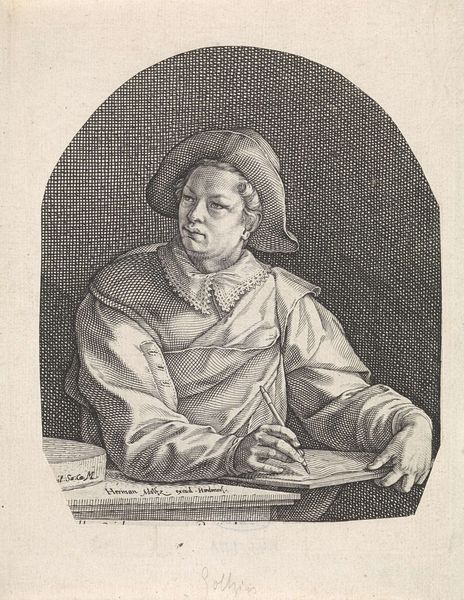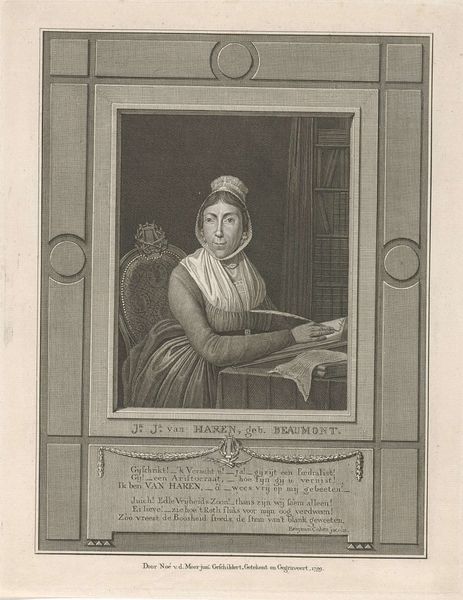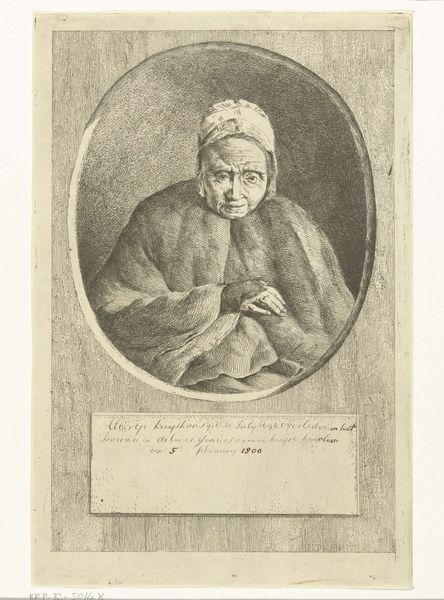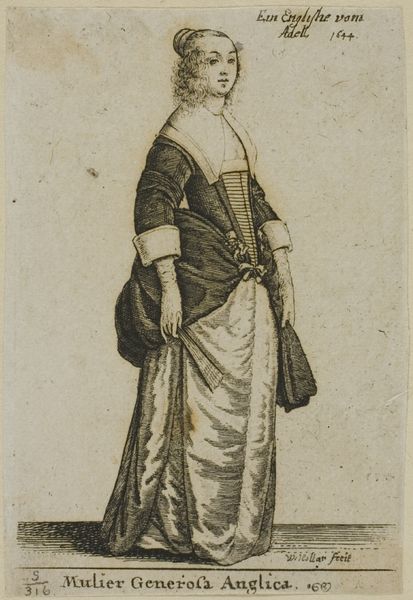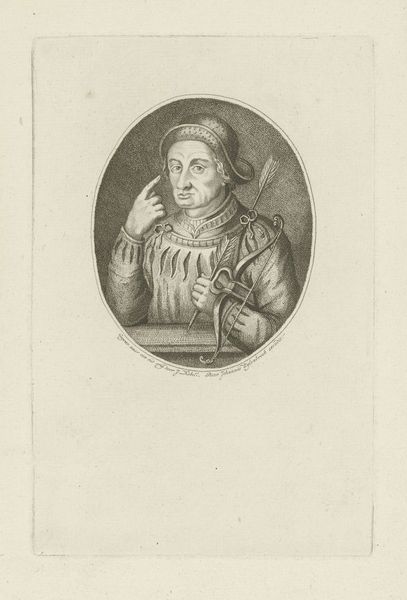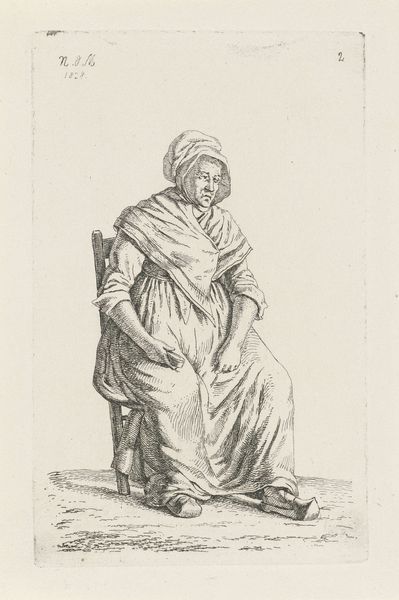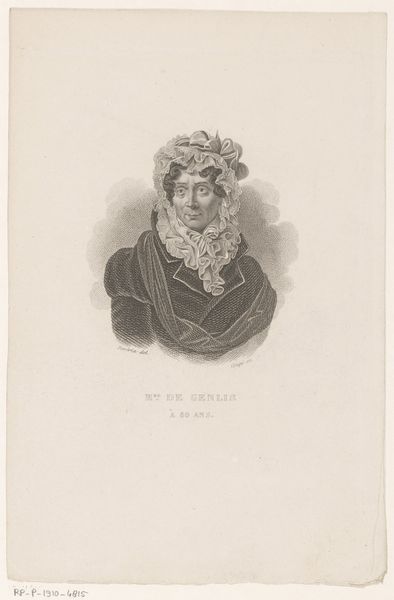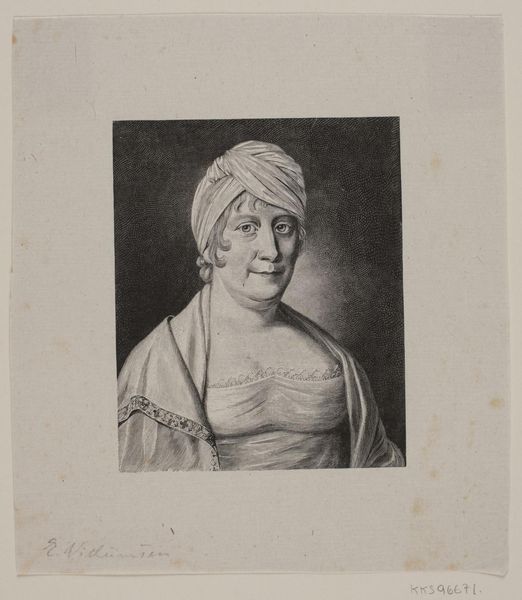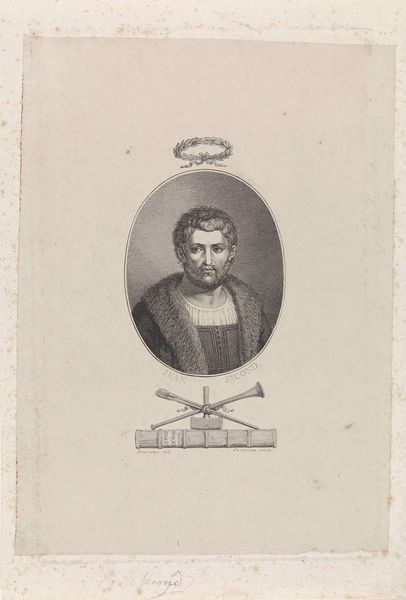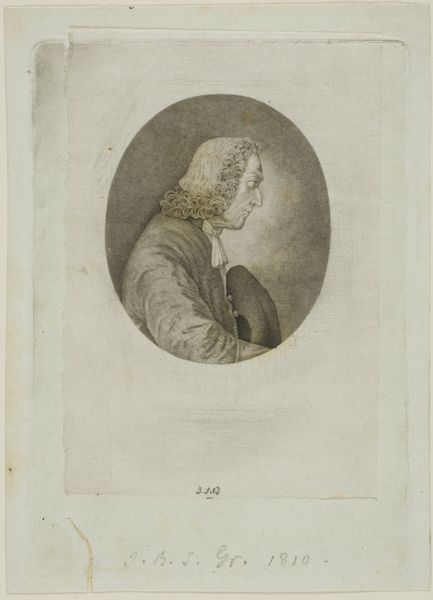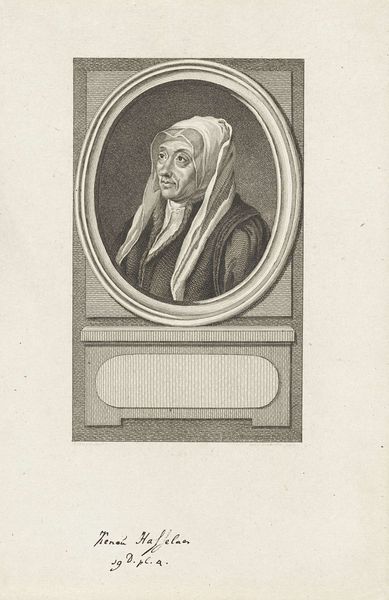
engraving
#
portrait
#
neoclacissism
#
history-painting
#
engraving
Dimensions: height 97 mm, width 77 mm
Copyright: Rijks Museum: Open Domain
Curator: Philippus Velijn’s "Portret van Hannah Mone," created between 1797 and 1836, is an arresting example of portrait engraving residing here at the Rijksmuseum. What is your immediate take? Editor: The linear quality immediately jumps out. It feels contained, but the figure's steady gaze suggests a story struggling to break free. Curator: Yes, let's address that restraint. The engraving medium itself lends a precision and clarity perfectly aligned with Neoclassical aesthetics. Note how Velijn employs meticulous cross-hatching to model the forms, creating a subtle play of light and shadow. It’s almost mathematical in its execution. Editor: And the oval frame further constrains the subject, yes, but is adorned with symbolic flourishes. On the left we see rolled documents, hinting at learning or commerce. The quiver of arrows on the right are associated with Apollo and arts, isn't that curious? Almost daring you to look beyond the sitter and construct the life of the sitter yourself, isn't it? Curator: Precisely! The objects become signifiers within a broader narrative—elements deliberately placed to invite the viewer’s interpretive labor. Editor: You can not overlook the dress, which seems typical. And that lacy bonnet is, surely, very fashionable? Perhaps, that signals Mone's attention to status? Or it just simply represents social context? Curator: Context certainly matters. Fashion could indicate societal values in this case. That all plays a key role in its communication and we cannot look past that. Editor: Her expression seems to resist easy categorization. She does not look joyful or sad... She does not look afraid. She looks almost like she wants to share her thoughts on modern day politics, doesn't it? Curator: Again, consider that the success of portraiture lies not merely in verisimilitude but in effectively conveying the essence or status of the sitter. It provides some food for thought. Editor: The effect leaves a quiet strength. We could debate all day about what we perceive the symbolism means and its place within Neoclassical artwork. But at least, for now, there is so much to observe here! Curator: I concur entirely. Such intricate details create an experience for the public to ponder on the essence of its being and purpose in correlation with art history and beyond.
Comments
No comments
Be the first to comment and join the conversation on the ultimate creative platform.


